The minimum garden area requirement
The minimum garden area requirement specifies the percentage of a lot that must be set aside to ensure the open garden character of suburbs is protected.
A dwelling, residential building or small second dwelling, including any associated driveway and car parking cannot be included in the area set aside as garden area.
Where the minimum garden area applies
The minimum garden area requirement applies to land in the Neighbourhood Residential Zone and General Residential Zone and must be met when:
- constructing or extending a dwelling, a residential building or a small second dwelling; or
- subdividing land to create a vacant residential, lot less than 400 square metres in area.
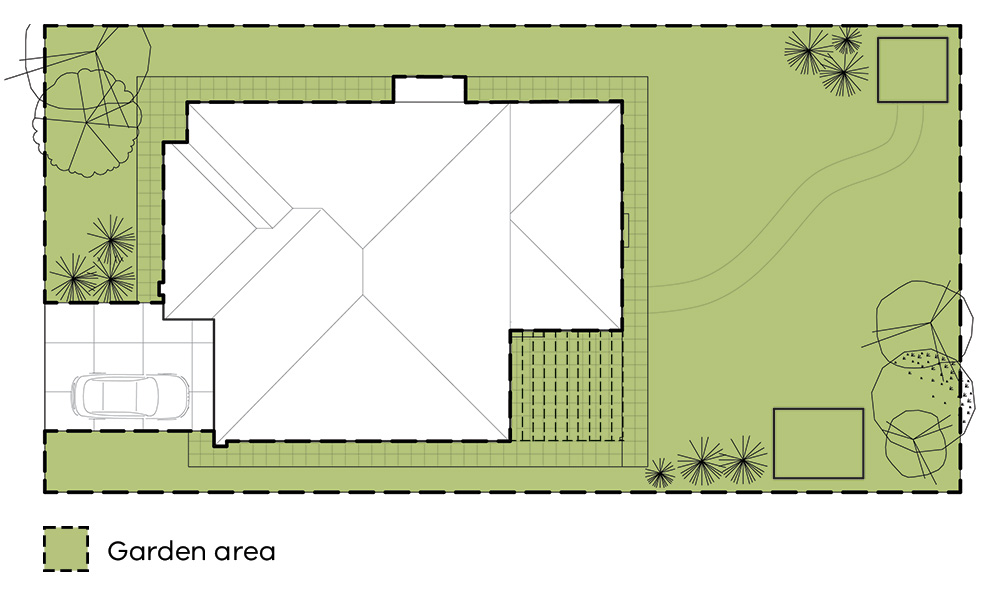
How much garden area must be provided?
When subdividing land that creates a vacant lot that is capable of being developed for a dwelling or a residential building in the Neighbourhood Residential Zone or General Residential Zone, 25% must be set aside as garden area on each vacant lot created that is less than 400 square metres in area.
When constructing or extending a dwelling, residential building or small second dwelling in the Neighbourhood Residential Zone or General Residential Zone, the size of the existing lot determines the minimum percentage of the lot that must be set aside as garden area.
| Lot size | Minimum percentage of a lot set aside as garden area |
|---|
|
400 – 500 sqm
|
25%
|
|
Above 500 – 650 sqm
|
30%
|
|
Above 650 sqm
|
35%
|
Defining garden area
Garden area is defined in clause 73 of all planning schemes as:
Garden area
Any area on a lot with a minimum dimension of 1 metre that does not include:
a) a dwelling, residential building or small second dwelling, except for:
- an eave, fascia or gutter that does not exceed a total width of 600mm;
- a pergola
- unroofed terraces, patios, decks, steps or landings less than 800mm in height
- a basement that does not project above ground level
- any outbuilding that does not exceed a gross floor area of 10 square metres; and
- domestic services normal to a dwelling, residential building or small second dwelling
b) a driveway; or
c) an area set aside for car parking
Buildings, works and hard surface areas included in the garden area
The minimum garden area requirement allows the construction of buildings and works that are typically associated with the use and enjoyment of the outdoor areas of a dwelling, residential building or small second dwelling.
Consequently, outbuildings and structures such as garden sheds, covered barbeque areas, swimming pools, tennis courts and paved areas including pathways and outdoor entertaining areas can be included in the garden area.
Other relevant planning definitions
Other definitions in clause 73 of the planning scheme are also relevant when applying the minimum garden area requirement. These include:
- Basement
- Domestic services normal to a dwelling or small second dwelling
- Dwelling
- Ground level
- Lot
- Residential building
- Small second dwelling.
Garden area inclusions and exclusions
Included in the garden area
- The width of any eave, fascia or gutter of a dwelling that does not exceed a total width of 600mm
- A pergola
- Unroofed terraces, patios, decks, steps or landings less than 800mm in height
- A basement that does not project above ground level
- Any outbuilding that does not exceed a gross floor area of 10 square metres such as:
- a garden shed
- a gazebo
- an arbor
- a pool house
- a greenhouse
- a covered barbecue area
- Domestic services normal to a dwelling or residential building including:
- sunblinds and shade sails
- flues and pipes
- domestic fuel tanks and water tanks, heating and cooling equipment and other services
- waste receptacle enclosures
- letterboxes
- Other structures including:
- a swimming pool or spa
- a tennis court
- a retaining wall
- a fence
- a paved area
- a private bushfire shelter.
Excluded from the garden area
- A dwelling (including any roofed outdoor area forming part of the dwelling)
- A small second dwelling (including any roofed outdoor area forming part of the small second dwelling)
- A basement that projects above ground level
- Any area set aside as a driveway providing vehicle access to car parking
- Any uncovered or covered car parking including a garage and carport
- Any area that has a dimension of less than 1 metre.
Garden area inclusions
Basement below ground level
Any area over a basement that does not project above ground level can be included in garden area.
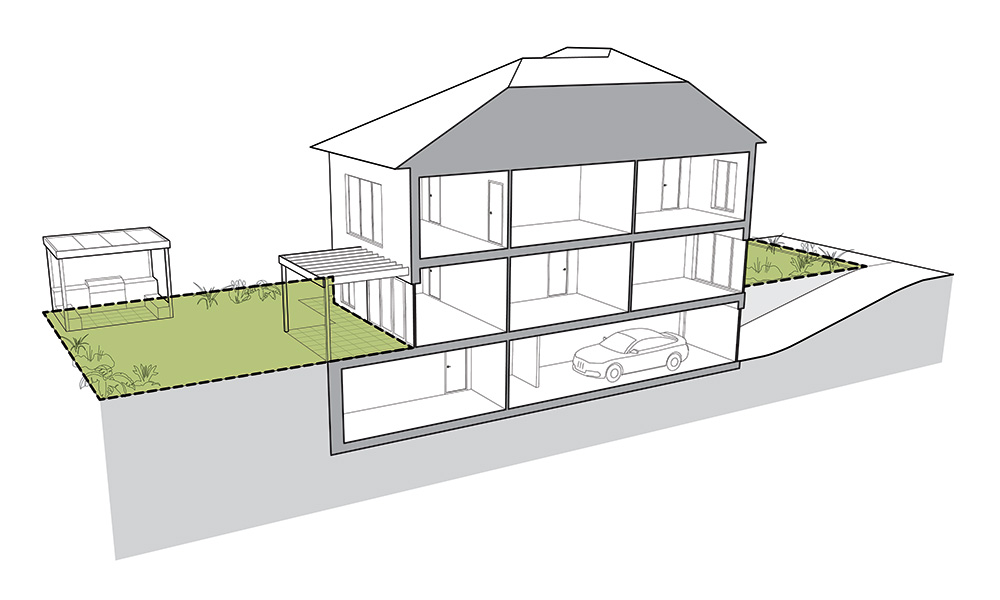
Unroofed terraces, patios, decks, steps or landings
Any unroofed terraces, patios, decks, steps or landings less than 800mm in height can be included in garden area.
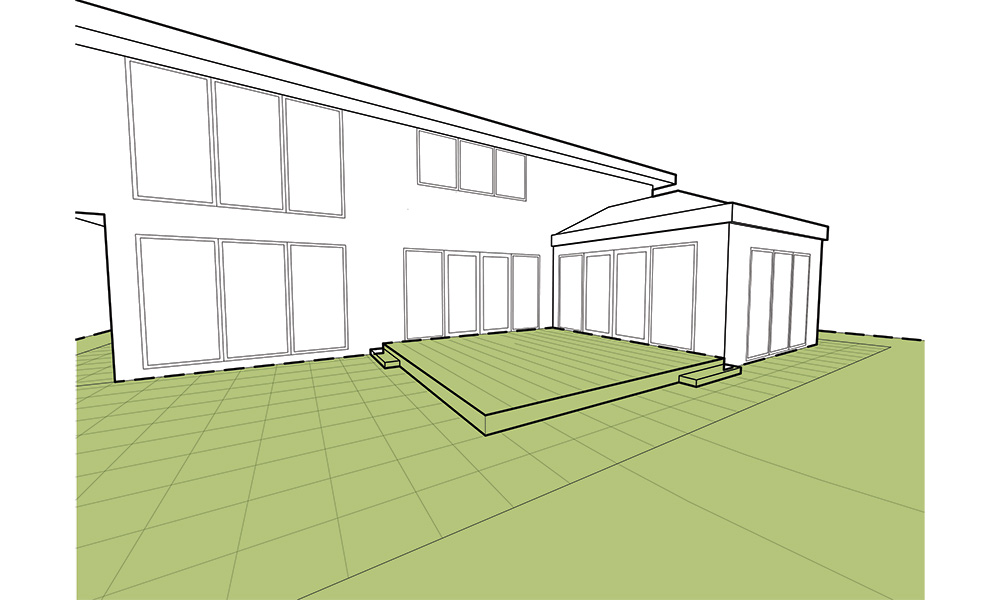
Eaves
Any area under an eave, fascia or gutter that does not exceed a total width of 600 mm can be included in garden area.
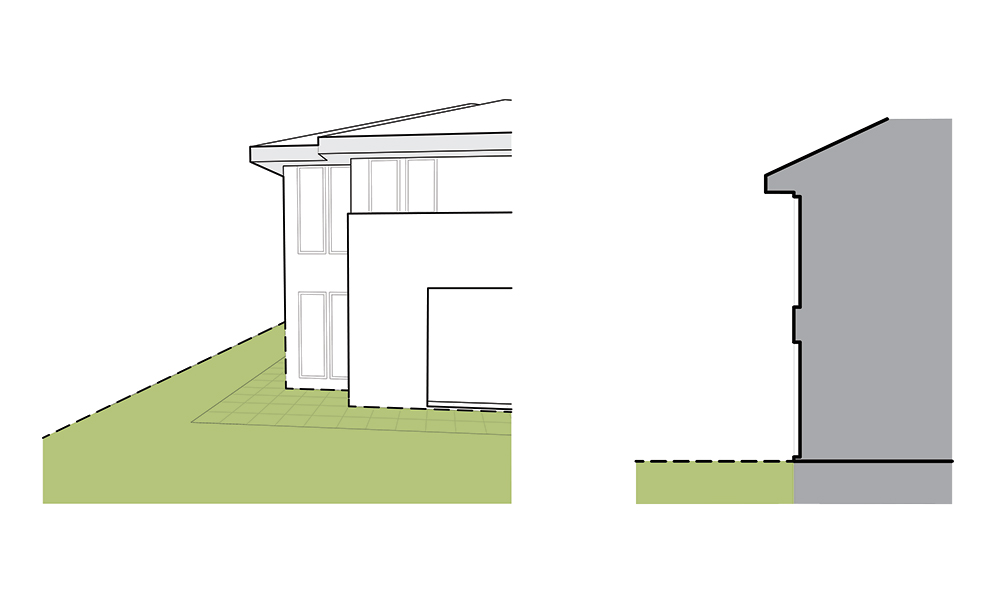
Pergola
Any structure normal to a dwelling, such as a pergola, can be included in garden area.
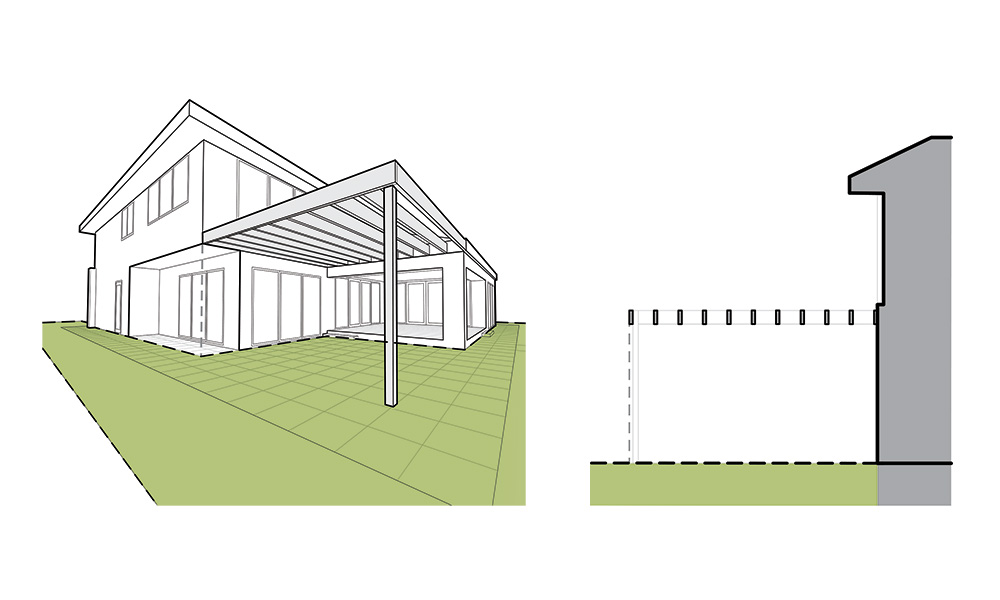
Covered barbecue, garden shed
Any outbuilding that does not exceed a gross floor area of 10 square metres can be included in garden area.
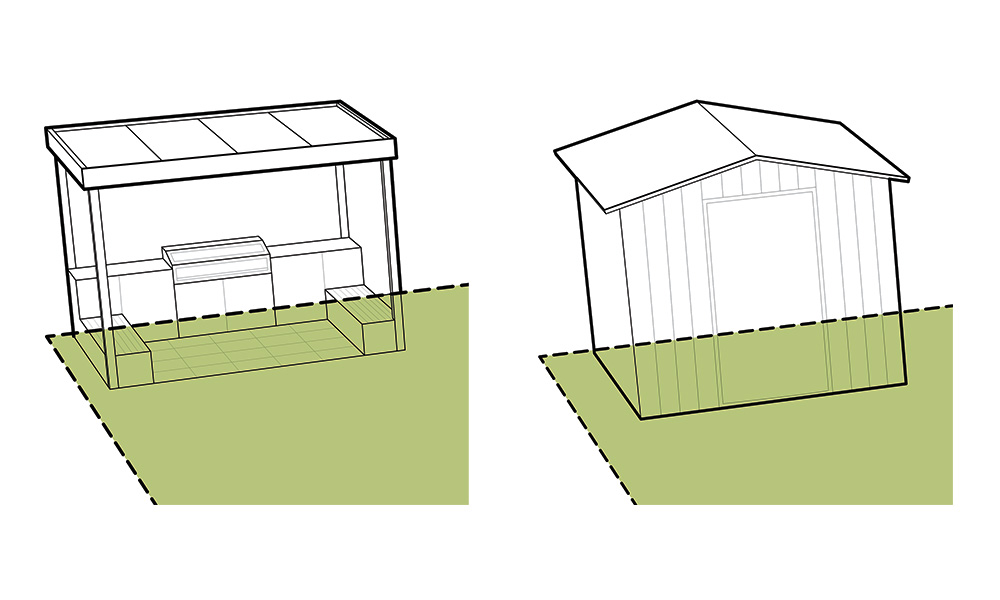
Projecting basement
Any area over a basement that projects above ground level cannot be included in garden area.
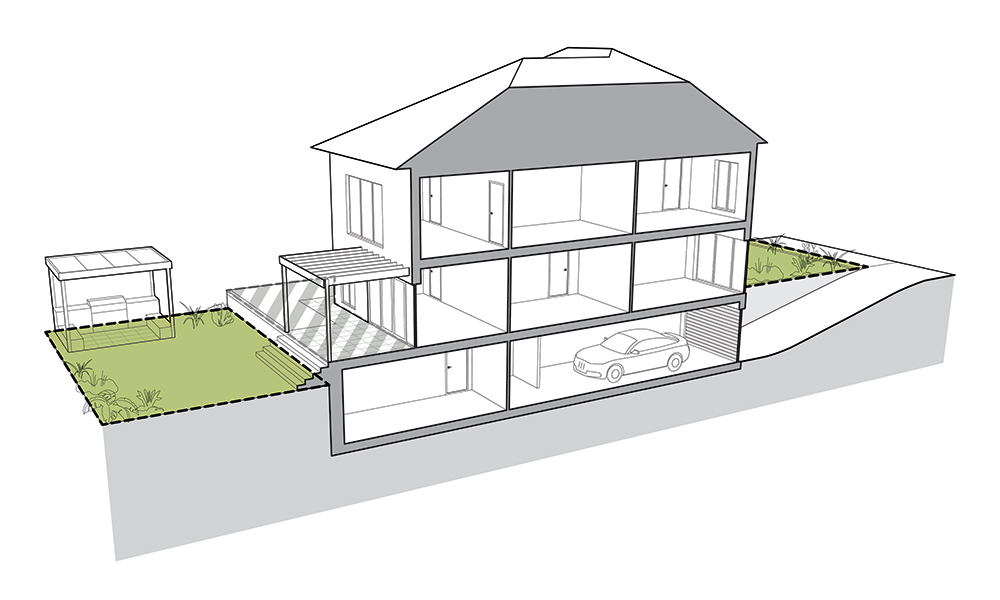
Verandah and porch
Any area under a porch or verandah forming part of a dwelling cannot be included in garden area.
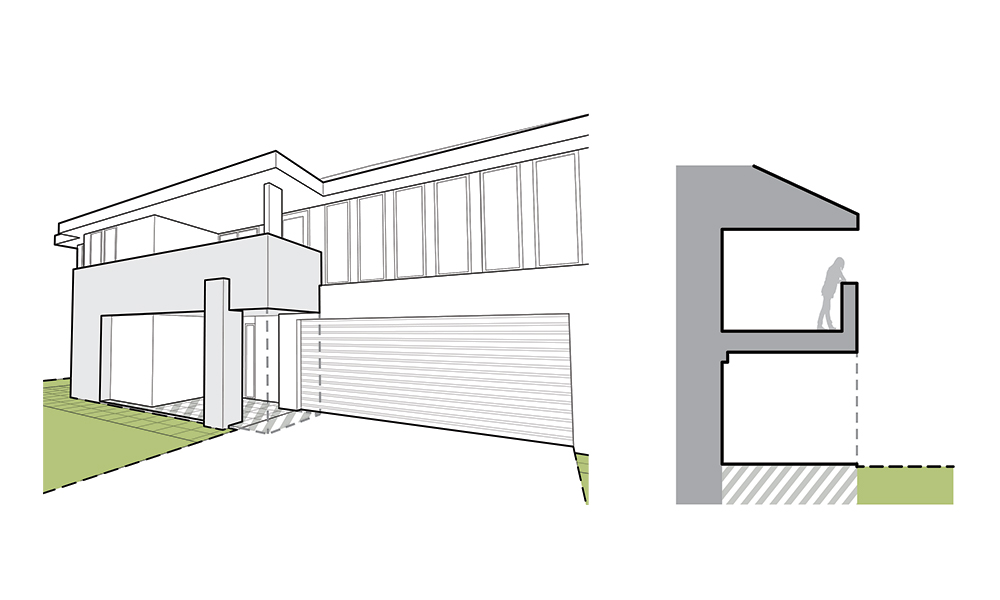
Roofed alfresco area
Any area under a roofed outdoor area forming part of the dwelling cannot be included in garden area.
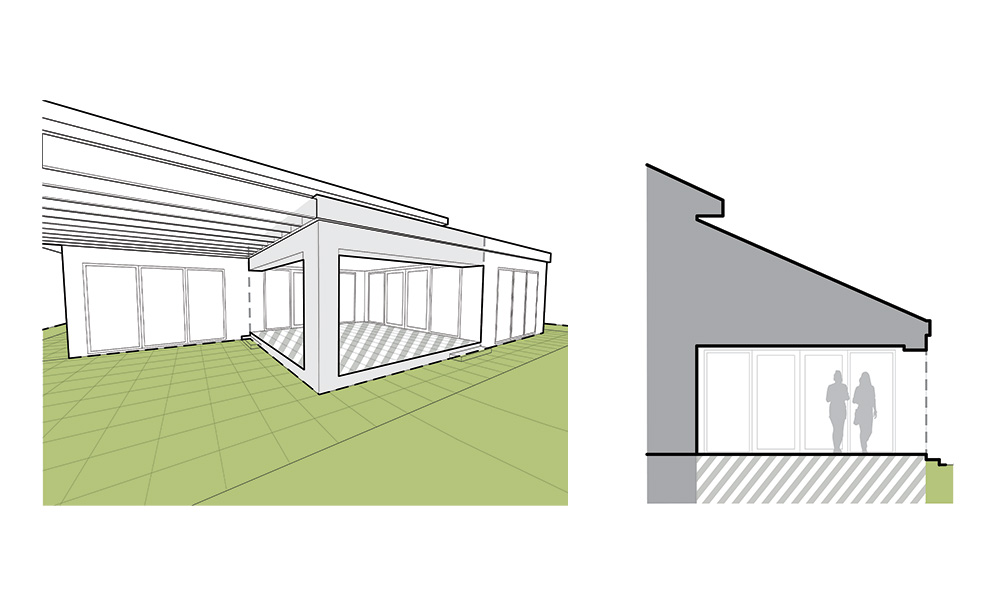
Upper storey building projection
Any area under a building projection forming part of the dwelling cannot be included in garden area.
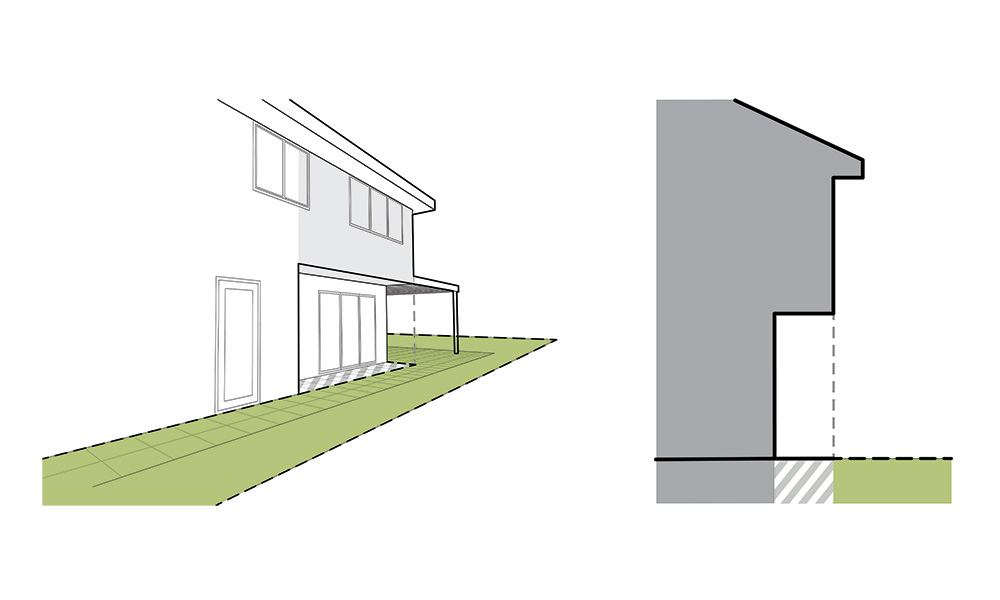
Balcony
Any area under a balcony forming part of the dwelling cannot be included in garden area.
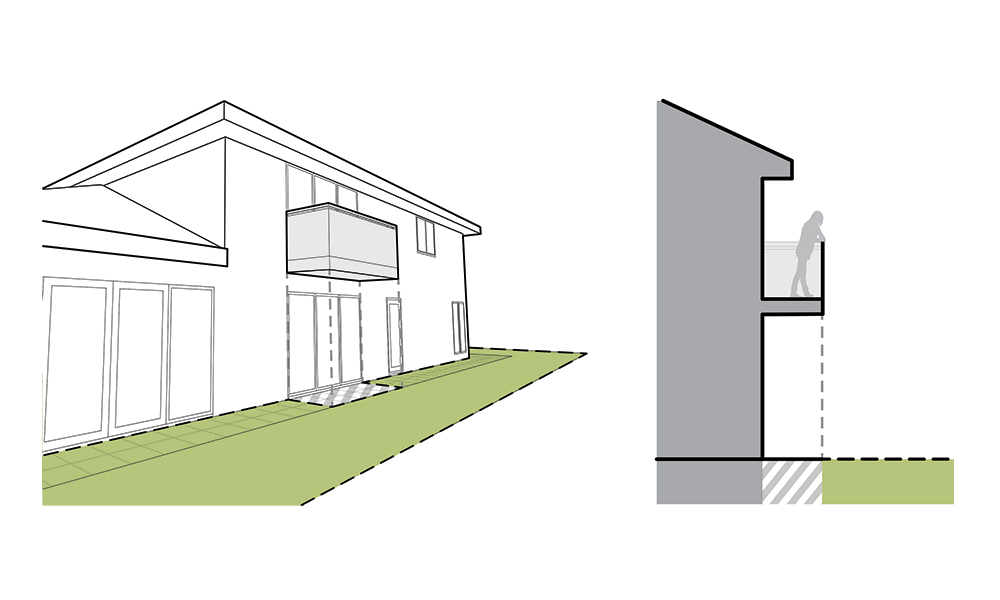
Driveway and car parking
Any area set aside as a driveway and car parking cannot be included in garden area.
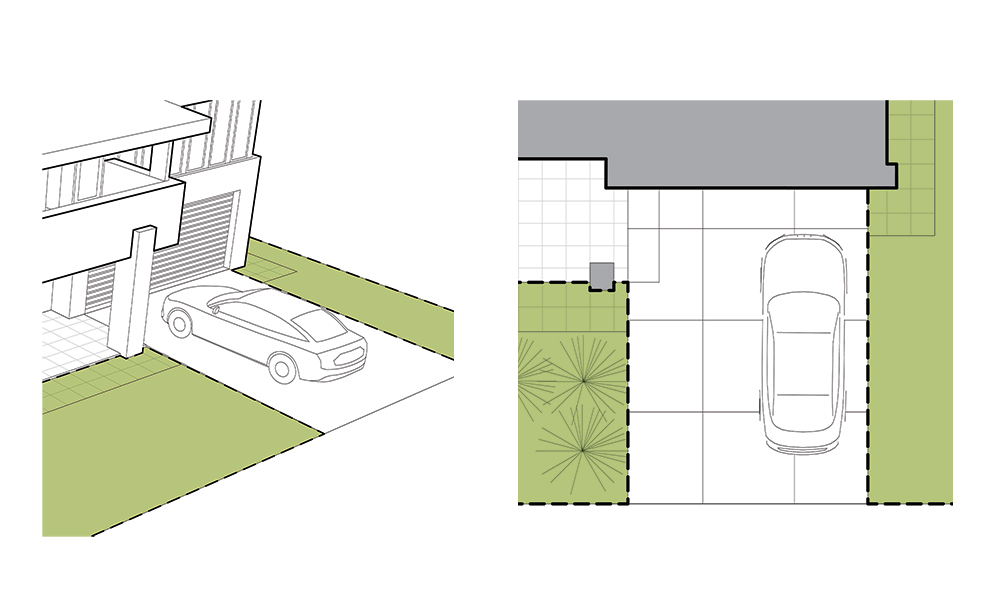
Operation of subdivision provisions
The minimum garden area requirement applies to a permit application to subdivide land to create a vacant lot that is less than 400 square metres in area capable of being developed for a dwelling or a residential building.
A vacant lot is a lot that does not have an existing dwelling, residential building or small second dwelling.
A minimum garden area of 25% must be set aside on each vacant lot created that is less than 400 square metres in area. The minimum garden area requirement is based on the area of the vacant lot being created, not the area of the lot that is being subdivided.
This ensures that where a dwelling or residential building does not form part of the subdivision application, any housing that is subsequently developed on the vacant lot respects the existing open garden character of the neighbourhood.
Where a vacant lot is used for another purpose such as a local road widening or public open space the minimum garden area requirement does not apply to that non-residential use.
Where a vacant lot less than 400 square metres is proposed, council should satisfy itself as to the best way to secure the 25 % minimum garden area.
Options include:
- Requiring the garden area to be included as a restriction on the plan of subdivision submitted for certification. This could be in the form of a text notation.
- Entering into an agreement with the owner of the land under section 173 of the Planning and Environment Act 1987 which requires the approved minimum garden area to be implemented to the satisfaction of the responsible authority.
It is important when securing the minimum garden area that it only applies to residential development of the land so that other non-residential purposes that may occur on the lot are not affected.
Exclusions from the garden area requirement for subdivisions
The minimum garden area requirement does not apply to an application to subdivide land to create a vacant lot that is:
- 400 square metres or greater
- less than 400 square metres where there is an:
- approved precinct structure plan or equivalent strategic plan
- incorporated plan
- approved development plan.
Operation of development provisions
The minimum garden area requirement applies to a planning permit to construct or extend a dwelling, a residential building or small second dwelling.
When constructing or extending a dwelling, a residential building or small second dwelling in the Neighbourhood Residential Zone or General Residential Zone, the minimum percentage of the lot that must be set aside as garden area is determined by the lot size.
| Lot size | Minimum percentage of a lot set aside as garden area |
|---|
| 400-500 sqm | 25% |
| Above 500-650 sqm | 30% |
| Above 650 sqm | 35% |
Where an application proposes two or more dwellings on a lot, the minimum garden area does not need to be equally distributed to each dwelling. For example, an upper floor apartment does not need to provide any minimum garden area as the garden area requirement relates to the original lot.
Where an application proposes two or more dwellings on a lot and subdivision of the land, the application will be assessed against the minimum garden area requirement for the construction of the dwellings and not the minimum garden area requirement for subdivision.
Where a planning permit has been issued for two or more dwellings, any subsequent subdivision of the land ahead of building construction will not need to be assessed against the minimum garden area requirement.
Exclusions from the garden area requirement for developments
The minimum garden area requirement does not apply to an application to construct or extend a dwelling or a residential building if:
- the lot is less than 400 square metres in area (unless encumbered by the 25% garden area requirement)
- the lot is 400 square metres or greater and is designated as a medium density housing site in an:
- approved precinct structure plan or an equivalent strategic plan
- incorporated plan
- approved development plan
- there is an existing building and it did not comply with the minimum garden area requirement on the approval date of amendment VC110
- the lot is identified in a schedule to the General Residential Zone that has switched off the minimum garden area requirement.
Garden area exemptions
The garden area exemptions recognise both existing and future residential development patterns that are incompatible with the application of the garden area requirement.
There is no requirement to set aside garden area when creating a vacant lot 400 square metres or greater in area because the minimum garden area requirement only applies when the vacant lot will be developed for a dwelling or residential building.
Conversely, the minimum garden area requirement does not apply to an application to subdivide land where there is an approved residential development as the minimum garden area requirement has already been satisfied as part of the residential development permit.
Lots less than 400 square metres in area that existed before the introduction of the minimum garden area requirement are exempt as they are typically found in older inner-city areas where housing tends to be more urban in style with small front setbacks and compact rear yards or courtyards and in existing suburbs where land has been developed for villa units and town houses.
Applying the minimum garden area requirement to these lots would unfairly limit the capacity to redevelop or renew existing dwellings.
Vacant lots less than 400 square metres in area created in larger brownfield and greenfield locations which are normally master planned from the outset to create a more dense and compact urban character are also exempt. Master planned communities typically integrate small lots and medium density housing sites with the public domain, including accessible green open space areas.
Smaller strategic redevelopment sites or areas with good access to services and facilities may also be identified for conversion and redevelopment to more intensive housing.
The preferred future character of these areas and sites may be different to the existing suburban character that the garden area requirement was introduced to protect so the minimum garden area requirement may not be appropriate for these locations.
Minimum garden area and precinct structure plans
Precinct structure planning is fundamental to the development of greenfield sites and, along with consolidation in urban areas, is an important part of the state government’s strategy to address strong population growth and the housing and employment demands that flow from this growth.
While the precinct structure plan has become the predominant strategic planning document guiding urban development in greenfield locations, there are older strategic documents that perform the same function and are recognised as an equivalent strategic plan. This may include an Outline Development Plan, a Strategic Framework Plan, a Concept Plan, a Master Plan or a Cell Plan.
Where a Neighbourhood Residential Zone or a General Residential Zone applies to a precinct structure plan or equivalent strategic plan, vacant lots less than 400 square metres in area that are designated medium density housing sites do not need to meet the minimum garden area requirement.
Typical precinct structure plan
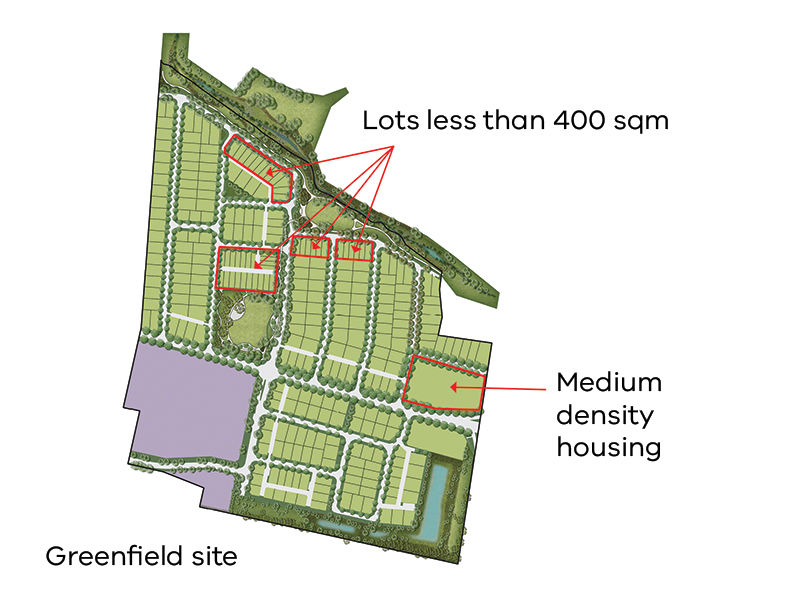
Minimum garden area and incorporated plans and approved development plans
Outside designated growth areas there are many areas identified for housing change in established urban areas across Victoria including:
- large urban renewal sites
- areas around major activity centres
- areas along public transport corridors and around train stations
- areas with good access to services and facilities
- small strategic redevelopment sites.
Where these areas are in a Neighbourhood Residential Zone or a General Residential Zone, and an incorporated plan or approved development plan applies to achieve more intensive housing outcomes, vacant lots less than 400 square metres in area and designated medium density housing sites do not need to meet the minimum garden area requirement.
Minimum garden area and the schedule to the General Residential Zone
The schedule to the General Residential Zone also allows the minimum garden area to be ignored for any land identified through the schedule.
Councils will need to determine on a ‘case-by-case’ basis whether:
- relying on the general exemptions for small lots and designated medium density housing sites in areas covered by a precinct structure plan, other incorporated plan or approved development plan is sufficient; or
- all land in an identified area should be exempted from the minimum garden area requirement to achieve other housing objectives.
Minimum garden area and ResCode
While there may be some overlap between the minimum garden area requirement and some of the existing under clause 54 and clause 55 residential standards, such as site coverage and permeability, the minimum garden area requirement is a different requirement to these standards.
The minimum garden area requirement differs from the existing siting and amenity standards regulated under clause 54 and clause 55 of the Victoria Planning Provisions in two fundamental ways:
- The minimum garden area requirement is a mandatory requirement that must be met and cannot be reduced.
- The minimum garden area requirement is a separate requirement that must be met as well as the requirements under clause 54 and clause 55.

















